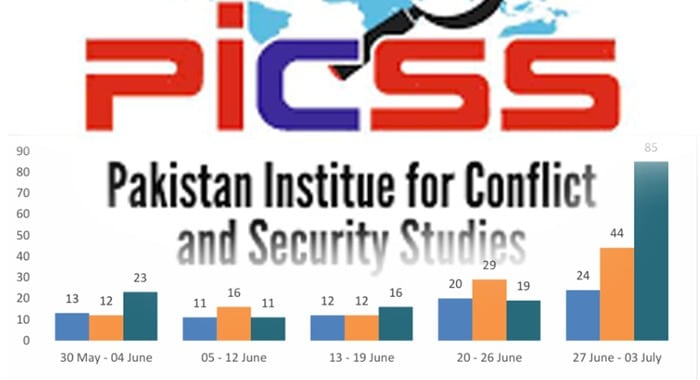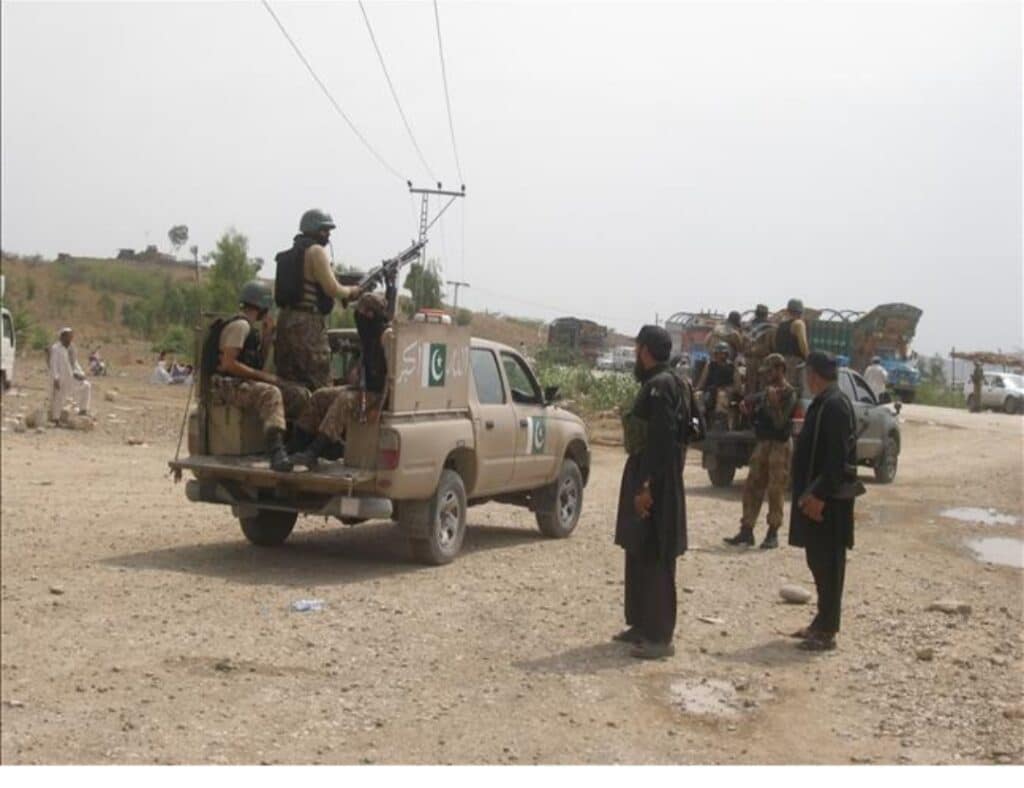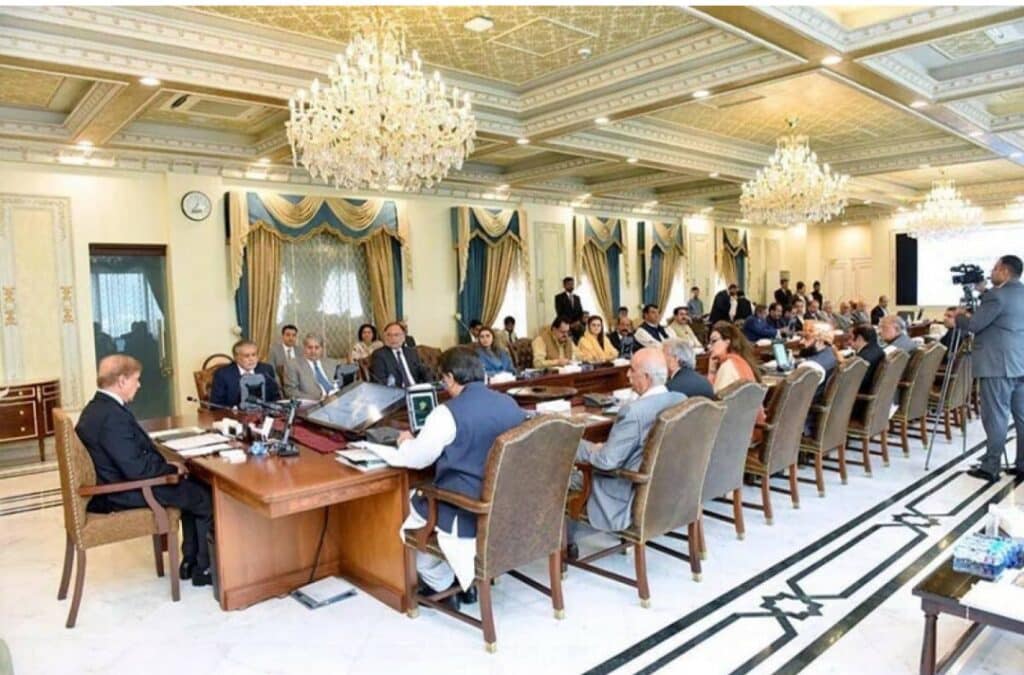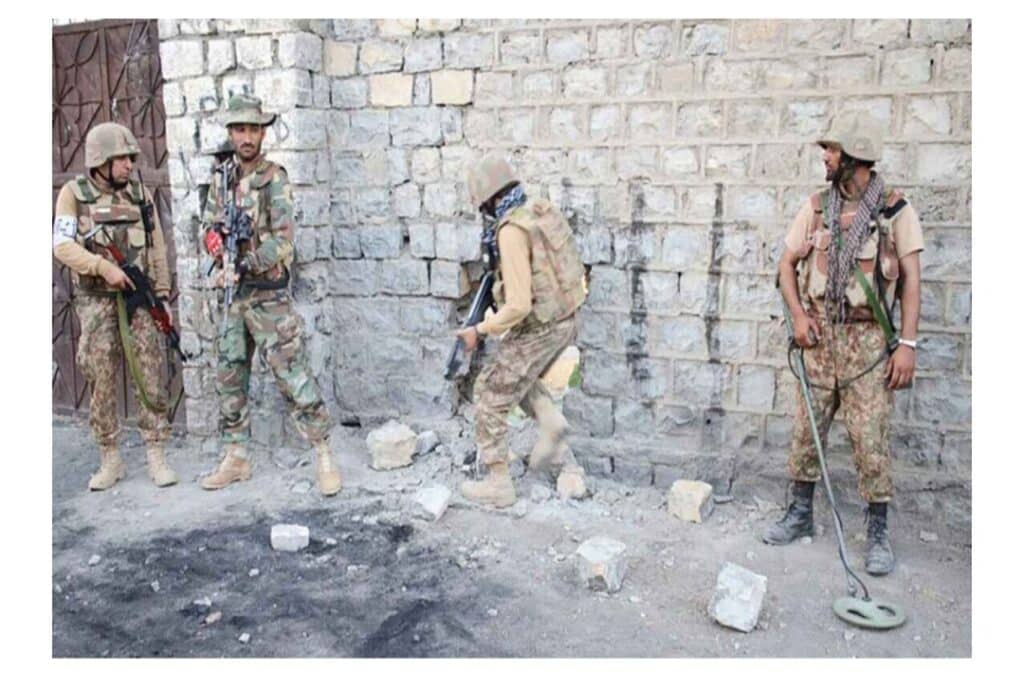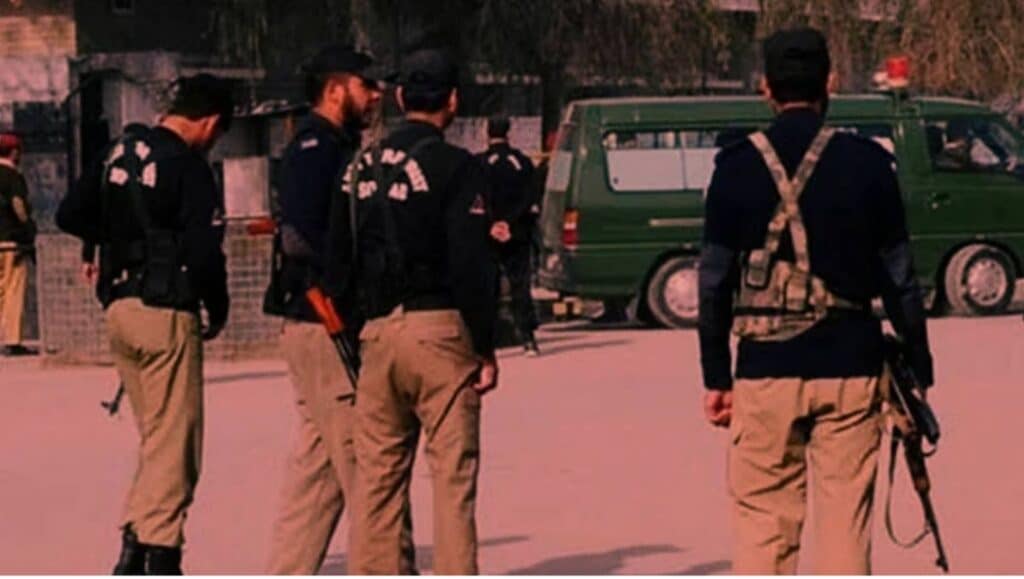Pakistan recorded a sharp rise in militant violence between June 27 and July 3, 2025, with 24 attacks resulting in 44 deaths and 85 injuries, according to the latest weekly report by the Pakistan Institute for Conflict and Security Studies (PICSS). The increase coincided with significant judicial, political, economic, and regional developments that collectively underscore a period of heightened transition and pressure for the country.
According to PICSS, the week saw a 20 percent increase in attacks compared to the previous reporting period. Khyber Pakhtunkhwa (KP) was the most affected region with 15 attacks, followed by seven in the former tribal districts and two in Balochistan. The attacks involved targeted shootings, improvised explosive devices (IEDs), mortar and grenade assaults, suicide bombings, and a quadcopter strike. Among the 44 fatalities were 26 security personnel and 13 civilians.
In retaliation, Pakistani security forces conducted 11 intelligence-based operations nationwide, eliminating 51 militants 46 of them in the former FATA region and arresting three suspects in Sindh. Remarkably, no casualties were reported among security forces or civilians during these operations, reflecting improved operational precision.
Defence and strategic ties with the United States deepened as Air Chief Marshal Zaheer Ahmed Baber Sidhu concluded a landmark visit to Washington the first by a PAF chief in more than a decade. He met senior officials at the Pentagon and State Department to discuss interoperability, joint training, and F-16 support services. U.S. defence officials expressed keen interest in Pakistan’s asymmetric air combat capabilities. Meanwhile, a Pakistani trade delegation held parallel economic talks, reinforcing Islamabad’s broader geo-economic pivot. Earlier, Army Chief Gen. Munir’s meeting with former U.S. President Donald Trump signaled recalibrated U.S. outreach to Pakistan’s military leadership. A concurrent visit by the South African Air Force Chief to Islamabad reflected Pakistan’s efforts to expand its global defence partnerships.
Regionally, Afghanistan remained in the spotlight. Despite Taliban assurances, U.S. lawmakers and regional observers accused the regime of sheltering banned outfits such as ISIS-K and the Tehreek-e-Taliban Pakistan (TTP), in violation of the 2020 Doha Agreement. While echoing similar concerns, Russia formally recognized the Taliban government becoming the first country to do so—aiming to stabilize regional security and diversify trade routes. Meanwhile, the return of thousands of Afghan migrants from Pakistan and Iran has overwhelmed basic infrastructure, triggering humanitarian appeals. The Taliban have continued engagement through the UN and regional summits, but meaningful international recognition remains elusive due to sanctions and governance concerns.
The PICSS report, framed within a week of sharp security escalation, legal realignment, economic gains, and shifting geopolitical currents, underscores the multifaceted challenges facing Pakistan. As the country navigates rising internal pressures and external uncertainties, the coming weeks will be crucial in determining its trajectory.

